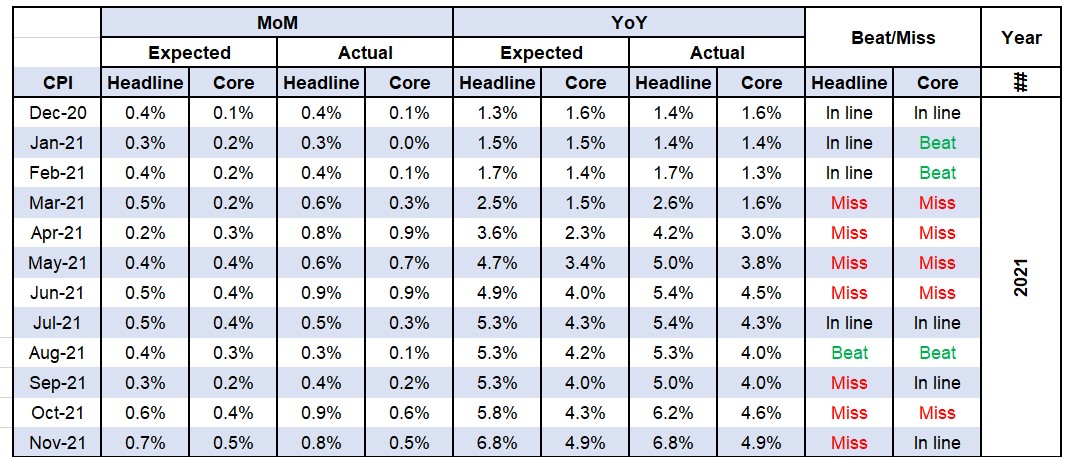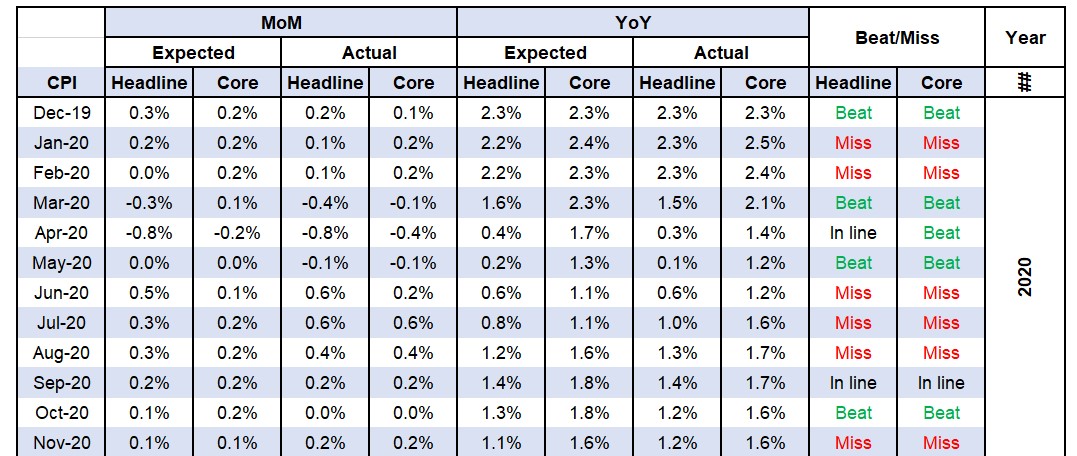
@LynAldenContact suggests Taylor Rule implies 10.2% FFR citing @stlouisfed FRED (#Fed).
Is 10.2% really what Taylor rule suggests the FFR should be currently at?
A thread.
1/13
Is 10.2% really what Taylor rule suggests the FFR should be currently at?
A thread.
1/13
https://twitter.com/LynAldenContact/status/1627026513077108737
Taylor Rule:
FFR = R* + 0.5 (GDP est - potential GDP) + 0.5 (inflation est - 2)
R* - natural interest rate (estimates vary from 2-2.5%); IOW FFR which is neither expansive nor restrictive
#Fed's Dec projections:
GDP est - 0.5%
Potential GDP - 1.8%
Inflation est - 3.1%
2/13
FFR = R* + 0.5 (GDP est - potential GDP) + 0.5 (inflation est - 2)
R* - natural interest rate (estimates vary from 2-2.5%); IOW FFR which is neither expansive nor restrictive
#Fed's Dec projections:
GDP est - 0.5%
Potential GDP - 1.8%
Inflation est - 3.1%
2/13

Assuming higher bound of the R* estimates, and #Fed's Dec SEP projections Taylor rule implies:
FFR = 2.4%
This is about 220 bps BELOW the current FFR!
And almost 800 bps BELOW that 10.2% @LynAldenContact quoted.
3/13
FFR = 2.4%
This is about 220 bps BELOW the current FFR!
And almost 800 bps BELOW that 10.2% @LynAldenContact quoted.
3/13
Those who follow me regularly know I've been calling for the #Fed to pause hikes back in Sep.
FFR before the Sep meeting was 2.25%-2.5% which is exactly what the #Fed's projection now suggest using the Taylor Rule.
Now the obvious Q is are the #Fed's projections correct?
4/13
FFR before the Sep meeting was 2.25%-2.5% which is exactly what the #Fed's projection now suggest using the Taylor Rule.
Now the obvious Q is are the #Fed's projections correct?
4/13
At July's meeting #Fed Chair Powell talked about R* of 2.25%.
Some have suggested R* is (a bit) higher than that.
I think there is a probability R* actually moved lower in the meantime given they hiked in Sep and beyond with #disinflation, overdoing it by 225 bps.
5/13
Some have suggested R* is (a bit) higher than that.
I think there is a probability R* actually moved lower in the meantime given they hiked in Sep and beyond with #disinflation, overdoing it by 225 bps.
5/13
For the sake of this analysis, let's assume R* is at 2.25%, and take latest prints of both #GDP and #inflation.
There is a high probability #GDP will be lower in 2023 and even the #Fed agrees with that.
So 2022 #GDP of 2.1% is likely an overestimate but I'll use it here.
6/13
There is a high probability #GDP will be lower in 2023 and even the #Fed agrees with that.
So 2022 #GDP of 2.1% is likely an overestimate but I'll use it here.
6/13
Also potential #GDP is likely higher than just 1.8% suggested by the #Fed's projections from Dec.
Average post WWII-era #GDP (1947-2022) was much higher at 3.1% which will be my potential #GDP figure.
7/13
Average post WWII-era #GDP (1947-2022) was much higher at 3.1% which will be my potential #GDP figure.
7/13

For #inflation I'll use the raw #CPI data (unadjusted 3MMA, annualized) which is currently at 1.6% in Jan.
8/13
https://twitter.com/MBjegovic/status/1625591926790492160?s=20
8/13
Since the #Fed doesn't target 2% #CPI, I'll use the (unadjusted) #CPI LT avg so Taylor Rule will be:
FFR = R* + 0.5 (2022 GDP - potential GDP) + 0.5 (Jan CPI - 3.3)
With all the mentioned inputs we get to FFR of only 0.9% using the Taylor Rule.
9/13
FFR = R* + 0.5 (2022 GDP - potential GDP) + 0.5 (Jan CPI - 3.3)
With all the mentioned inputs we get to FFR of only 0.9% using the Taylor Rule.
https://twitter.com/MBjegovic/status/1625591930494099456?s=20
9/13
To recap, with the #Fed's latest (Dec) projections FFR should be at 2.4% using the Taylor Rule.
With latest inputs FFR using the Taylor Rule should be even lower at 0.9%!
So 10.2% quoted by @LynAldenContact is an incorrect Taylor Rule number.
10/13
With latest inputs FFR using the Taylor Rule should be even lower at 0.9%!
So 10.2% quoted by @LynAldenContact is an incorrect Taylor Rule number.
10/13
Now we come to the crucial Q - how will the #Fed react to the latest #inflation developments?
When will they pause and finally cut rates?
Much of this will, of course, depend on the #inflation going forward.
So where is #inflation going in 2023?
11/13
When will they pause and finally cut rates?
Much of this will, of course, depend on the #inflation going forward.
So where is #inflation going in 2023?
11/13
These threads take a lot of time and effort to write.
If you like the content, please love and retweet to help me spread the message.
12/13
If you like the content, please love and retweet to help me spread the message.
12/13
I made an overview of #inflation moving forward and what will the #Fed do about it in my latest workshop.
If interested in getting a recording, message me.
13/13
If interested in getting a recording, message me.
https://twitter.com/MBjegovic/status/1623467108527906816?s=20
13/13
*Correction:
FFR = R* + Jan CPI + 0.5 (2022 GDP - potential GDP) + 0.5 (Jan CPI - 3.3)
which gives 2.5% FFR using the Taylor Rule.
This is still a lot lower than where 4.5%-4.75% currently, and a whole lot lower than the originally mentioned 10.2%.
H/T @powpowpaws
FFR = R* + Jan CPI + 0.5 (2022 GDP - potential GDP) + 0.5 (Jan CPI - 3.3)
which gives 2.5% FFR using the Taylor Rule.
This is still a lot lower than where 4.5%-4.75% currently, and a whole lot lower than the originally mentioned 10.2%.
H/T @powpowpaws
*Correction
FFR = R* + current inflation + 0.5 (GDP est - potential GDP) + 0.5 (inflation est - 2)
Using #Fed's preferred measure (PCE) current #inflation is 2.1% (3MMA annualized in Dec).
FFR = R* + current inflation + 0.5 (GDP est - potential GDP) + 0.5 (inflation est - 2)
Using #Fed's preferred measure (PCE) current #inflation is 2.1% (3MMA annualized in Dec).
@LynAldenContact *Correction:
Assuming higher bound of the R* estimates, the current PCE and the #Fed's Dec SEP projections Taylor rule implies:
FFR = 4.5%
which is exactly where the current FFR is and almost 600 bps BELOW the 10.2% originally.
Assuming higher bound of the R* estimates, the current PCE and the #Fed's Dec SEP projections Taylor rule implies:
FFR = 4.5%
which is exactly where the current FFR is and almost 600 bps BELOW the 10.2% originally.
@LynAldenContact *Correction
Taylor Rule using the Fed's estimates is 4.5% while the latest inputs give FFR of only 2.5%.
Taylor Rule using the Fed's estimates is 4.5% while the latest inputs give FFR of only 2.5%.
• • •
Missing some Tweet in this thread? You can try to
force a refresh














